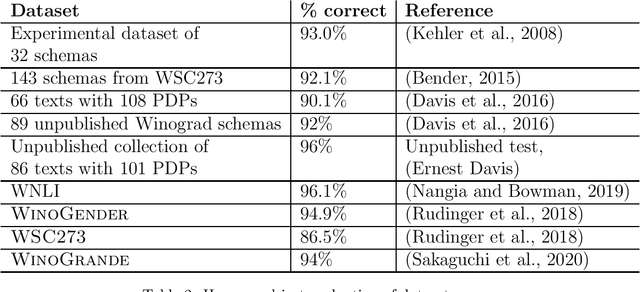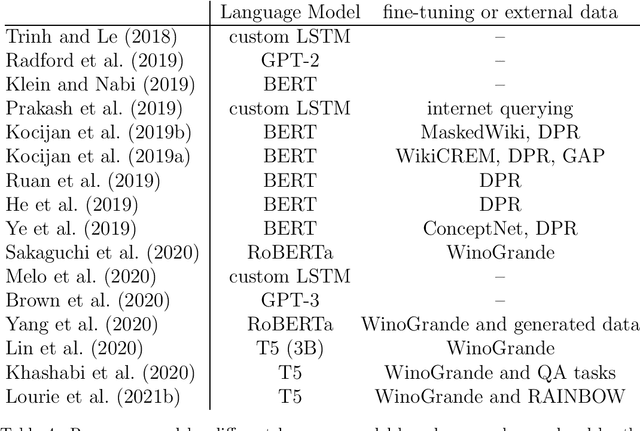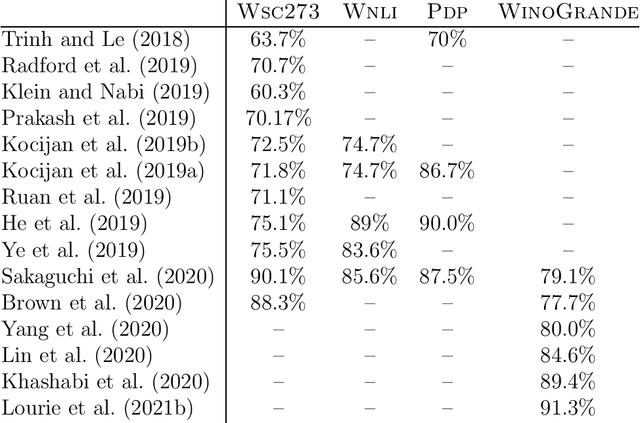Leora Morgenstern
The Defeat of the Winograd Schema Challenge
Jan 16, 2022



Abstract:The Winograd Schema Challenge -- a set of twin sentences involving pronoun reference disambiguation that seem to require the use of commonsense knowledge -- was proposed by Hector Levesque in 2011. By 2019, a number of AI systems, based on large pre-trained transformer-based language models and fine-tuned on these kinds of problems, achieved better than 90% accuracy. In this paper, we review the history of the Winograd Schema Challenge and assess its significance.
A Review of Winograd Schema Challenge Datasets and Approaches
Apr 23, 2020Abstract:The Winograd Schema Challenge is both a commonsense reasoning and natural language understanding challenge, introduced as an alternative to the Turing test. A Winograd schema is a pair of sentences differing in one or two words with a highly ambiguous pronoun, resolved differently in the two sentences, that appears to require commonsense knowledge to be resolved correctly. The examples were designed to be easily solvable by humans but difficult for machines, in principle requiring a deep understanding of the content of the text and the situation it describes. This paper reviews existing Winograd Schema Challenge benchmark datasets and approaches that have been published since its introduction.
NL Understanding with a Grammar of Constructions
Jan 17, 1995Abstract:We present an approach to natural language understanding based on a computable grammar of constructions. A "construction" consists of a set of features of form and a description of meaning in a context. A grammar is a set of constructions. This kind of grammar is the key element of Mincal, an implemented natural language, speech-enabled interface to an on-line calendar system. The system consists of a NL grammar, a parser, an on-line calendar, a domain knowledge base (about dates, times and meetings), an application knowledge base (about the calendar), a speech recognizer, a speech generator, and the interfaces between those modules. We claim that this architecture should work in general for spoken interfaces in small domains. In this paper we present two novel aspects of the architecture: (a) the use of constructions, integrating descriptions of form, meaning and context into one whole; and (b) the separation of domain knowledge from application knowledge. We describe the data structures for encoding constructions, the structure of the knowledge bases, and the interactions of the key modules of the system.
 Add to Chrome
Add to Chrome Add to Firefox
Add to Firefox Add to Edge
Add to Edge